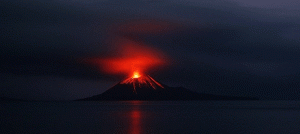On-going anthropogenic carbon emissions has reached levels 40% higher than pre-industrial ones in 1750, due to human burning of fossil fuels. Despite international discussions and various national efforts to decrease carbon emissions, the amount of heat-trapping carbon dioxide in the atmosphere reached a record 390.9 parts per million (ppm) in 2011, according to a report recently released by the UN’s World Meteorological Organization (WMO). As a result, 30% more atmospheric heat was kept from escaping to space than in 1990. The increased amounts of CO2 in the atmosphere has lead to a 1°C increase in average temperatures worldwide. This may not sound much, but with the long retention time of CO2 in the atmosphere the average temperature will continue to rise for a long time even if we should manage to limit our carbon emissions extensively. The World bank estimates an average temperature rise to as much as 4°C by 2060 unless we start reducing our carbon emissions significantly! The effects of such a dramatic global warming would mean serious threats to the human civilization, with extreme weather, heat waves and sea-level rise, but that is not all…
The geological record testifies to the effects of global warming. Numerous scientific articles dealing with the causes and consequences of the mass extinctions at the end-Permian (252 million years ago) and end-Triassic (201 million years ago) have provided evidence of the dire effects of intense global warming. Both events are linked to massive volcanism from large igneous provinces (LIPs) that emitted huge amounts of CO2 and methane to the Earth’s atmosphere. As discussed by Payne and Clapham (Annual Review of Earth and Planetary Sciences, May 2012) such mass extinction events in the geological record may serve as an important ancient analog for the twenty-first century! Climate change and increased temperatures, possibly coupled with destruction of the ozone layer, can account for the extinctions on land, whereas changes in ocean oxygen levels, CO2, ocean acidification, and temperature made life difficult for marine animals, resulting in the demise of as much as 96% and 80% of all species for the end-Permian and end-Triassic events, respectively.
Recent scientific reports provide warning signals. One of the most well documented consequences of the increased CO2-levels at the end-Permian and end-Triassic events is referred to as the biocalcification crisis. The increased CO2-levels caused upper ocean acidification due to lowering of the pH of surface waters, causing problems for calcareous organisms such as calcareous phytoplankton and reef-building organisms, e.g. bivalves and corals. Scientists have long discussed the on-going coral bleeching as one result of our anthropogenic carbon emissions, but now Bednarsek et al. (Nature Geoscience, advanced on-line publication 2012) report alarming evidence of dissolution of shells on living pteropods (shell-bearing free-swimming sea-snails) in the Southern Ocean, providing further warning signals of on-going ocean acidification.
In addition, Arneborg et al. (Nature Geoscience, advanced on-line publication 2012) show increased inflow of warm and salty bottom waters to the central Amundsen shelf in Antarctica where the thinning of glaciers have persisted over the last decades. The Amundsen shelf is part of the West Antarctic Ice Sheet that contains enough ice to raise global sea level by several metres and, because it is grounded mainly below sea level, it is extra sensitive to ocean warming.
These reports, among many others, should serve as serious warning signals to world leaders that we need to take immediate action to reduce carbon emissions. So far, we have not managed to act efficiently on reducing emissions. At the UN-sponsored climate meeting in Copenhagen in 2009 the relatively weak agreement was to a non-binding target of limiting the world’s greenhouse-gas-triggered temperature increase to no more than 2°C (3.6°F) above preindustrial levels to limit the potential damage. The 2011 numbers provided by the UN’s World Meteorological Organization (WMO) clearly show that we are failing to keep even that!




